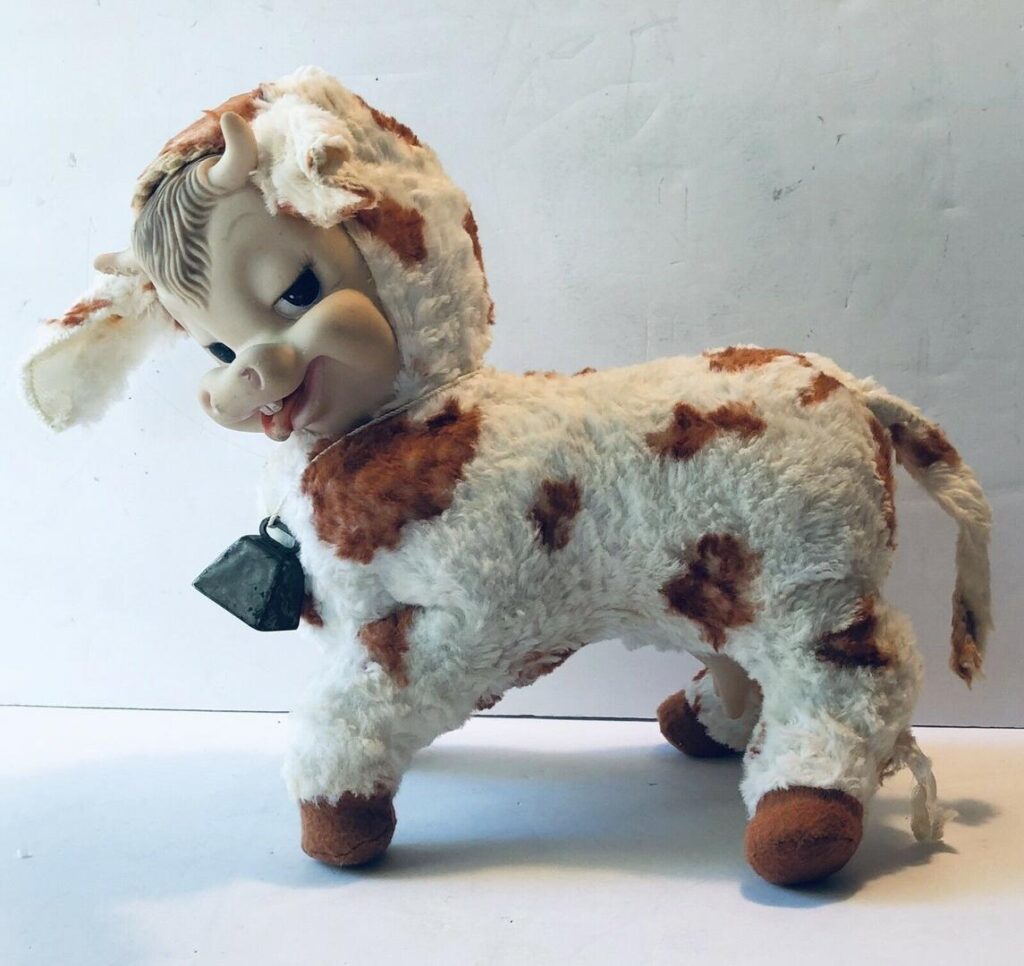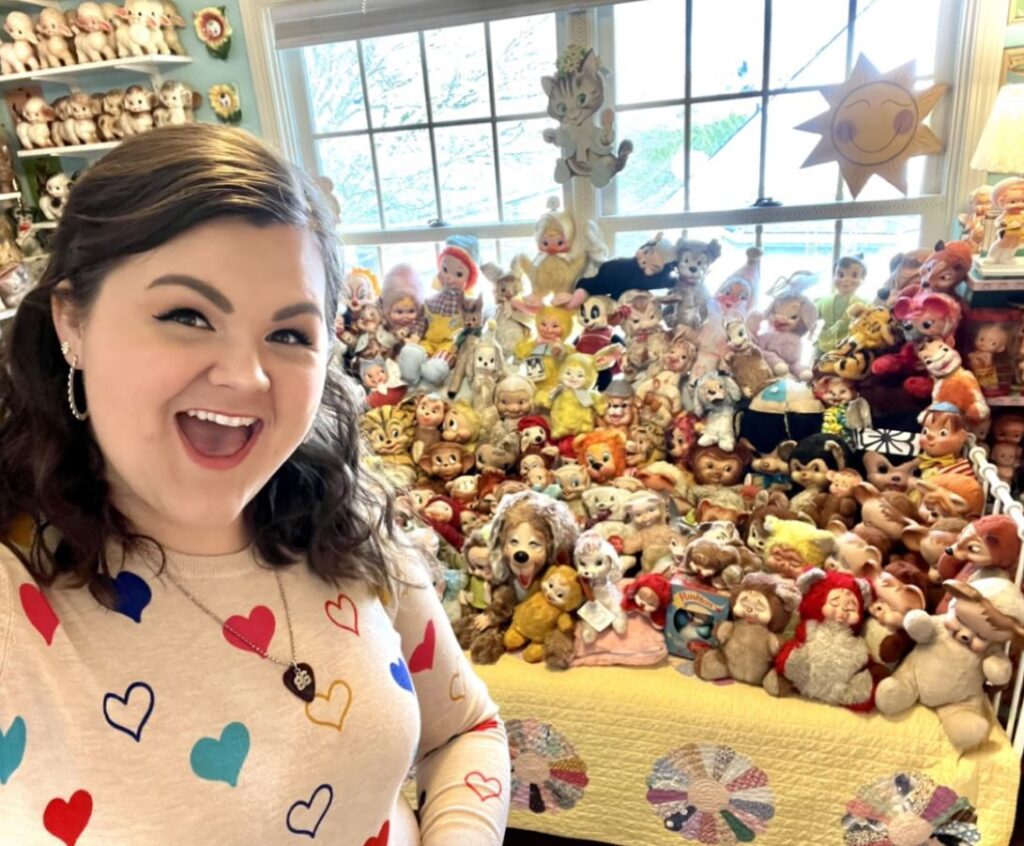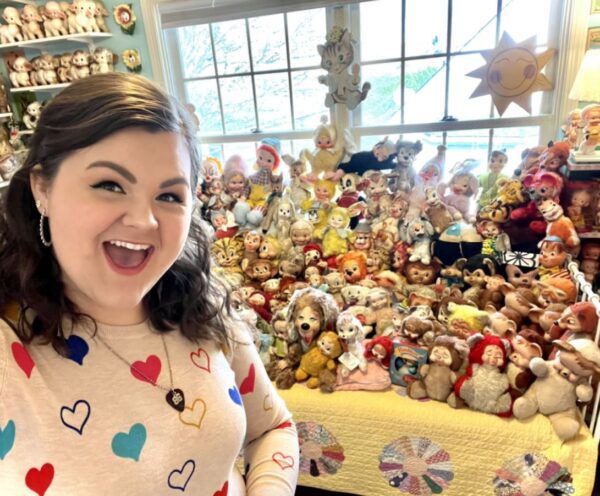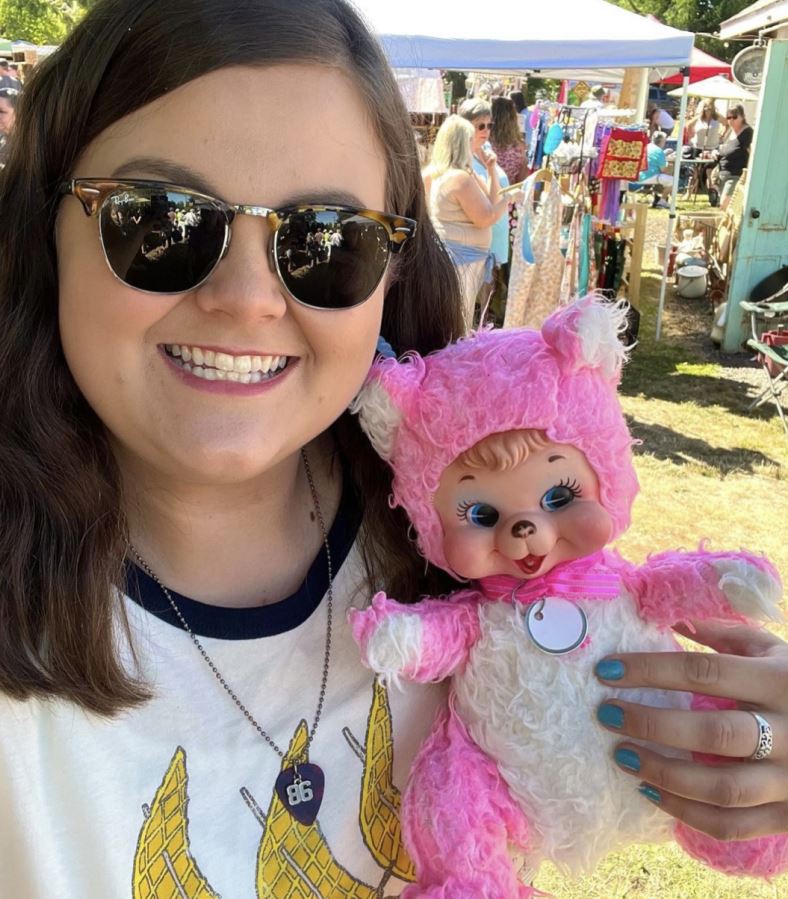#Wacky #Rubber #Faces #Rushton #Plushies #WorthPoint
They say that “beauty is in the eye of the beholder.” This could not be more apropos than for collectors of the incredibly kitschy and somewhat terrifying Rushton plushies. Unlike your normal stuffed animal with soft, adorable faces, these plushies feature animated and over-exaggerated rubber faces attached to traditional stuffed bodies. Everything from udder-laden cows to foxes to monkeys to ducks—Rushton and plush companies like it turned virtually the entire animal kingdom into these mid-century must-haves with creepy visages. Occasional human plushies—like babies, elves, hobos, and clowns—just added to the nightmare fuel.
A Plush-tastic History
To be fair, plushies were considered delightful when they initially hit the market as nursery kitsch in the 1950s. Although Rushton was the most prominent manufacturer, others like Knickerbocker Toys, My-Toy, Columbia Toy Products, Gund, Ganz Brothers, Jee-Bee Toys, and the UK’s Chiltern added their own rubber-faced models to the mix. Rushton, however, put the plush toy on the map and remains the most desirable brand for collectors today.
Based in Atlanta, The Rushton Company (formal name) was the brainchild of Mary Rushton, née Waterman Phillips, who began her dollmaking career in 1917. Her stockinette dolls creations (made from women’s stockings) became very popular in the 1920s. She coined them “Mawaphil” dolls—a twist on her full name. After marrying William Wight Rushton in 1921, Mary and her new husband formally launched The Rushton Company—the largest American manufacturer of soft dolls at that time.

In the 1950s, Mary’s daughter, Wight Rushton, launched the Star Creation Line, which introduced these new painted rubber-faced animals and dolls. Known later as “plushies,” they became Rushton’s most popular line for nearly twenty years. Other companies manufactured their own versions, resulting in market saturation. Although Rushton went out of business in 1983 and rubber-faced animals were out of style by the 1970s and 1980s, collectors have discovered these era-specific gems in recent years.
Yes, Those Are Rubber Udders
Today, plushie fanatics shell out serious cash for all brands—and the odder looking the plushie, the better. They can range from $100 to close to $1,000 and over. The average Rushton plushie goes for $200 to $400, depending on its condition and rarity. Among the most desirable Rushton plush toys are Stinky the Skunk; the Marineland collection featuring Omar the Octopus, Bubbles the Whale, and Goldy Fish; Diaper Duck; Daisy Belle, the cow with udders; and Santa with a Coke bottle. Although all ages collect plushies, millennials, in particular, seem drawn to the over-the-top toys. Singer-songwriter Melanie Martinez, 28, even featured giant Rushton plushies in her 2017 music video for her song “Mad Hatter.”
Another young fan, Kayla Marcell (@kaylasunshine32 on Instagram), explains the appeal of the odd-looking plushie.
Q. What is it about this toy that initially appealed to you?
A. There are so many different styles, brands, animals, sizes, and colors—it made me want to collect them all. Some people think they are creepy, but I find them all so cute.
Q. How many rubber-faced plushies do you own?
A. Around one hundred or so.

Photo courtesy: Kayla Marcell
Q. What is the “holy grail” plushie you wished you owned?
A. The rubber face I’m most seeking is the Rushton octopus. That is one of the most expensive, in-demand plushies out there, as well as the other nautical rubber faces like the whale and the fish.
Q. How do you handle people who question why you would collect such odd-looking toys? Do people comment negatively, or are most positive?
A. Yes, I do all the time… whether it’s a DM or just commenting on my Instagram posts. I’ve had several hurtful comments from people sharing their opinions of what I collect. I try not to let it get to me. But I’d say 95 percent of the time, comments are very nice.
Q. The kitsch factor is high with plushies. What is it about that kitschy look that moves you?
A. I have always been a very happy person that liked bright and colorful things… Ever since I was a kid, I’d collect something and have to have them all—the different shapes, sizes, and colors. I wouldn’t sleep until I had them all.
Q. What is your favorite plushie?
A. My favorite would have to be the Rushton yellow bunny with the blue vest (Peter Rabbit). When I started vintage collecting, my family and I went to an estate sale super early. I went to a big box of stuffed animals to see if a rubber face would happen to be inside, and there it was, sitting on the bottom for $8. So that was super fun to find!
Q. What is it that plushies have that regular stuffed animals lack?
A. The rubber faces! I just like the look of them, honestly. I don’t get as excited when I come across any old stuffed animal. I also think it’s more exciting to find a plushie in the wild because they are so desirable and expensive right now.
For those interested in following in Kayla Marcell’s footsteps, make sure you have the money to do so. It will not be a cheap endeavor. Try estate, garage, and yard sales in addition to eBay, Etsy, and in antique stores/malls. If social media sites like Instagram and TikTok are anything to go by, people of all ages are catching on to the desirability of these wacky characters that still bring joy some seventy years after their retail heyday.
Jenna Girard has been a freelance writer and copy editor for over 25 years, with a focus on feature writing. A lifelong collector of antiques and collectibles, Jenna has amassed a remarkable collection of entertainment ephemera, vintage fabrics, head vases, and mid-century art and home décor. After 16 years of living in Los Angeles and working in the entertainment industry, Jenna now resides in her home state of Michigan, where she continues to write/copy edit for LA-based media outlets.
WorthPoint—Discover. Value. Preserve.





